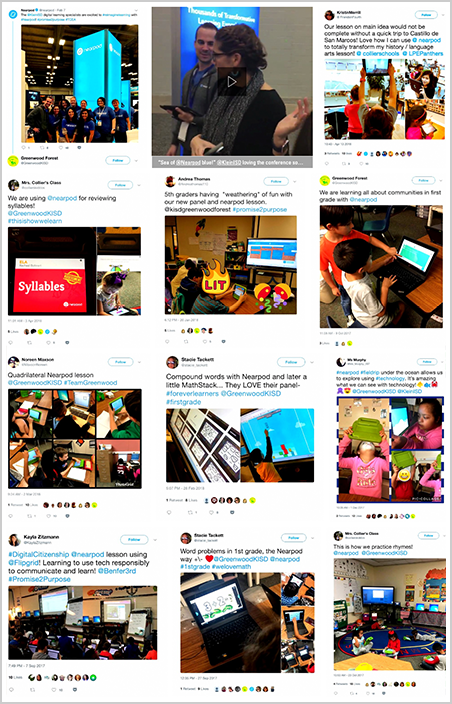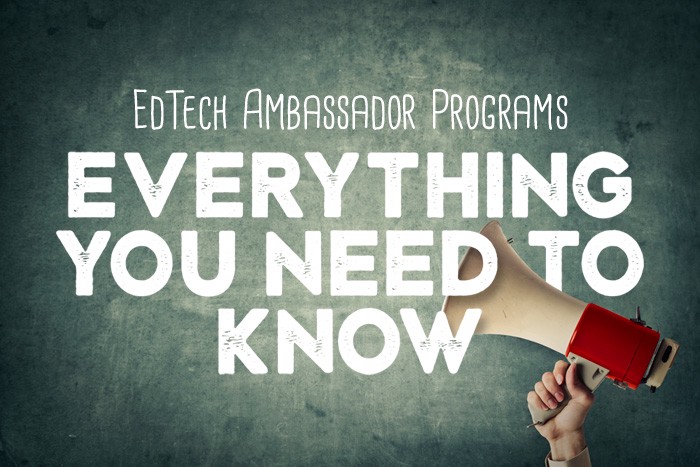Dear Guido,
We are an early stage ed tech company that began selling last year. We’ve noticed that usage and customer product knowledge are low. How do I ensure my customers are successful with my product?
— Post-Sale Sadness
Dear Post-Sale Sadness,
Great question! I’m glad to hear you are thinking about this early on. One of the best pieces of advice I got from one of our most experienced investors right after closing our Series A was the following:
“You have so much work to do and it can feel a bit overwhelming. If you will do just one thing right, make sure your early customers are successful and happy with your product. The success of your very first customers will be absolutely crucial to your long term growth.”
Oh boy was he right.
The short answer to this question is to make customer success a core competency of your organization, and to start as early as possible. Before I share our own experience building a Customer Success organization at Nearpod, I’d like to start with some context.
- First, you’re not alone. Achieving meaningful levels of product usage and user engagement beyond your early adopters is a challenge for all products, both inside and outside education.
- Defining success is not obvious. It may mean very different things for different customers and even for different people in your own company. My advice is to always start your customer implementations by discussing what success means for your customers, and by setting very clear expectations of what you and your product can and cannot deliver.
- Successful implementations take time, especially when working with large school districts. Whenever possible, buy yourselves some time by pursuing multi-year contracts.
- Last, customer success should not be a shortcut for product-market fit. There’s no point in trying to scale a product that has yet to find product market fit.
Nearpod has evolved roughly through 3 stages of customer success efforts, and we continue to evolve our Customer Success organization.
Stage 1: Customer-centric Strategies, But No Formal Customer Success Organization
Right after we started selling to schools, we quickly realized that we couldn’t just hand over log-in credentials and expect teachers to implement by themselves. No matter how easy-to-use the product was, we needed to support our customers in using our product effectively.
In this earliest stage, our customer efforts were mostly delivered by online training materials, webinars, and tech support. Our main measure of success was whether or not the customer renewed. While contract renewal is certainly important, we have come to understand client success much more holistically than that.
Once we reached the 1-year mark of selling to schools, we started to experience significant growth in the number of accounts that we were managing, but we were seeing mixed results. While some of our school customers loved the product and were using it quite successfully, others were not really engaging at all.
Doing only training and support was not enough.
Stage 2: Creating a Dedicated Customer Success Team
To move out of renewal firefighting mode and towards strategic customer relationships, we decided to designate 4 full-time team members to formally kick off our Customer Success organization.
This team became responsible for “owning” relationships with accounts, While the smaller accounts (aka “Growth”) received a lot of automated support, our “Value” (larger) accounts received a much more personalized experience.
We also began to interact with our customers in ways we hadn’t before:
- Incorporated onboarding strategies.
- Started to offer dedicated training webinars.
- Began to offer Nearpod training in person.
Following this formalization and our higher investments in customer success efforts, we saw increases in teacher usage, better admin responsiveness and we were able to build stronger personal relationships with our customers. All of these translated into better renewal rates, more upsells, and stronger growth.
Part 3: Segmenting and Scaling our Customer Success Efforts
As a result of the positive reviews we were getting from our School customers, we were able to to get our first contracts with Districts, servicing multiple schools at once. This new reality forced us to redesign our Customer Success efforts once again.
This time, we needed to make sure that we could dedicate more resources to our largest implementations, which became much more complex to manage. To achieve that goal, we added a 3rd group to our account segmentation: Premier accounts.
Example of Customer Success Segmentation

In addition to segmenting our customers by enrollment, we decided to start differentiating the way we serviced our largest contracts versus our smallest ones.
In the case of large contracts, our Customer Success Managers should have the bandwidth to deliver a more personalized “high-touch” service. Among other benefits, this approach allows us to: i) develop a much deeper knowledge of our customers, their needs and priorities; ii) build specific customized plans to reach the shared goals, and iii) be proactive to identify potential issues before things actually do go wrong.
In building this new tier of our Customer Success organization, it was really important that we hire the right people. Our Premier customer success managers joined us with deep experience in and around public school districts, often in the regions that they now manage. These Premiere CSMs are based in their territories to maximize face-to-face time with their accounts. This combination of extensive experience with school districts and readiness to be “in the field” has been key to creating that high-touch experience for our Premiere accounts.
For economic reasons, this same approach cannot be applied to our smallest accounts. These are managed in a more “scalable” way, which we call a “tech-touch” approach. We do this by designing flows of nurturing emails, in-app communications, online trainings and product webinars that can help these accounts stay in the loop about our latest features and usage ideas. Our team gets involved on an “as-needed” basis, typically when we need to address customers’ support questions and/or discuss renewals or upsells into new products.
In summary:
- If you’re facing engagement challenges with your early customers, you’re not alone.
- Even if your product is very easy-to-use, achieving meaningful engagement beyond early adopters requires an implementation plan.
- As soon as you’re confident in your product-market fit, it’s time to think about your customer success strategy. Acknowledge that this strategy will evolve over time with your product, your go-to-market strategy, and your own customers’ knowledge.
- Customer segmentation is critical. Determine how to give the right attention to your key customers and manage your smaller accounts in a way that makes economic sense.




